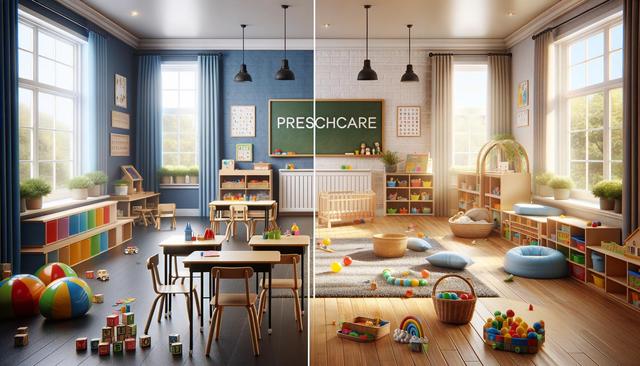
Understanding the Differences Between Preschool and Daycare
Purpose and Educational Focus
One of the primary differences between preschool and daycare lies in their core objectives. Preschools are generally more education-focused, often following a structured curriculum designed to prepare children for kindergarten. These programs typically include activities that promote early literacy, math skills, and social development. On the other hand, daycare centers tend to emphasize providing a safe and nurturing environment for children while their parents are at work. While many daycares include learning activities, the emphasis is usually on care rather than formal education.
Preschools usually have a specific educational philosophy, such as Montessori or play-based learning, and hire educators trained in early childhood education. This means that children enrolled in preschool may experience a more classroom-like setting with scheduled lessons and group activities. In contrast, daycare centers may offer flexible lesson plans and more unstructured playtime, which can still be beneficial for developing social and motor skills.
Age Groups and Enrollment Requirements
Another key distinction is the age range of children typically accepted into each type of program. Preschools often start accepting children around ages 3 to 5, targeting the years just before kindergarten. They may also have stricter enrollment requirements, such as children being potty-trained or meeting specific developmental milestones.
Daycare centers, however, usually accept a broader age range, from infants as young as six weeks to children up to 12 years old in some cases. This makes daycare a more versatile option for families with children of varying ages. Some centers even offer after-school programs for older children, making it a convenient solution for working parents.
- Preschool: Typically ages 3–5
- Daycare: Infants to school-aged children
- Preschool may require potty training
- Daycare often offers more flexible entry
Hours of Operation and Scheduling Flexibility
Daycare centers are generally known for their flexible hours, often operating from early morning until evening to accommodate working parents. This extended schedule can include full-day care, part-time options, and even drop-in services, depending on the provider.
Preschools, in contrast, usually follow a school-like schedule with limited hours—often from mid-morning to early afternoon—and may only operate during the academic year. This can be a challenge for parents who need full-day coverage, although some programs do offer extended care options for an additional fee.
For families trying to balance work and childcare, the schedule offered by a daycare may be more practical. However, for those who can manage the limited hours, preschool may provide a stronger foundation for academic readiness.
- Daycare: Full-day, part-time, and flexible scheduling
- Preschool: Set hours, typically during the school year
- Extended care may be available at preschools
Socialization and Environment
Both preschools and daycare centers offer children opportunities for socialization, but the nature of these interactions can differ. Preschools often group children by age and emphasize group activities that foster cooperation, communication, and emotional development. These interactions are usually guided by educators trained to encourage peer bonding and conflict resolution.
Daycare environments may be more mixed-age, especially in smaller centers or home-based settings. While this can provide benefits such as peer learning and mentorship among children, it may also mean less structured social development activities. However, the nurturing setting of a daycare can be especially comforting for younger children or those just beginning to interact with peers.
Ultimately, both settings can support social growth, but parents may want to consider their child’s personality and developmental stage when choosing between the two.
Cost Considerations and Financial Impact
Cost is often a significant factor in the decision-making process. Generally, preschool programs may be less expensive than full-time daycare, particularly if they operate only part of the day. However, the cost per hour of instruction in preschool can be higher due to the educational focus and credentialed staff.
Daycare centers that offer infant care or extended hours usually charge more to reflect the additional caregiving required. Some families may qualify for subsidies or tax benefits depending on their income and employment status, which can make daycare more affordable.
When evaluating cost, consider not just the monthly fee but also the value provided. Some questions to ask include:
- Are meals and snacks included?
- Is there a curriculum or learning plan?
- What are the staff-to-child ratios?
- Are there additional fees for extended care or special programs?
Understanding the full scope of services can help families make a more informed and financially sound choice.
Conclusion: Choosing the Right Fit for Your Child
The decision between preschool and daycare depends largely on a family’s specific needs, schedules, and educational goals for their child. Preschool may be a strong choice for families prioritizing early academic preparation and structured learning, especially for children nearing kindergarten age. Daycare, on the other hand, offers crucial flexibility and care for a wider age range, making it ideal for working parents or those with younger children.
Both environments play an important role in early childhood development. By considering factors such as educational focus, schedule flexibility, social opportunities, and cost, families can choose a program that aligns with their values and supports their child’s growth. Whether it’s preschool or daycare, the key is to find a nurturing, safe, and stimulating environment where children can thrive.